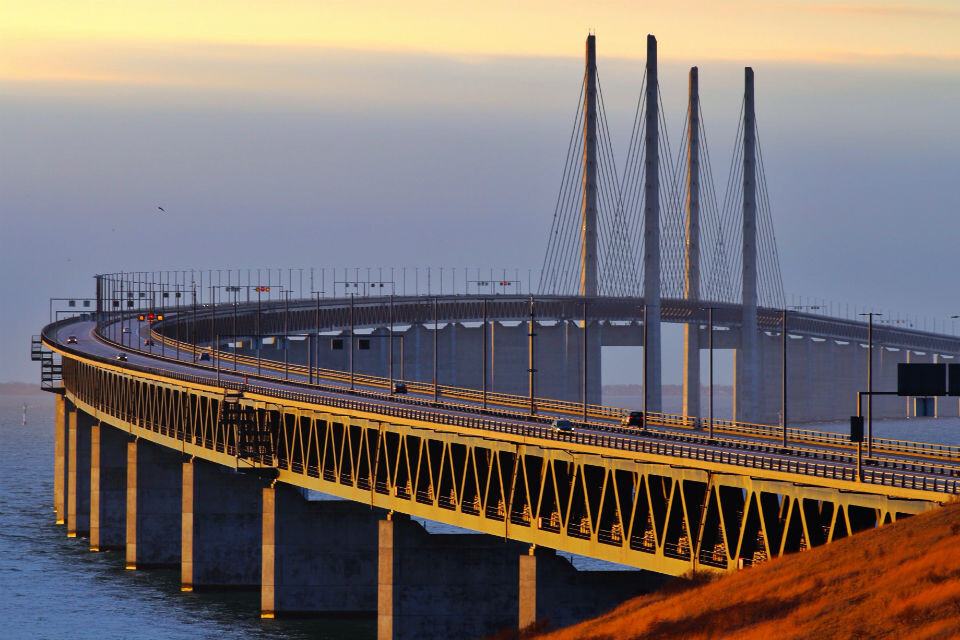
Helsinki, Finland – Finland is actively exploring groundbreaking infrastructure projects to enhance its connectivity with mainland Europe, including the potential construction of fixed bridge and tunnel links across the Baltic Sea. This initiative, driven by geopolitical shifts and the European Union's push for integrated transport networks, aims to secure Finland's logistical routes and reduce its reliance on maritime transport in the face of potential disruptions.
A recent report by the Confederation of Finnish Industries (EK) has reignited discussions on three key connection options:
Helsinki-Stockholm Link: A bridge or tunnel connecting Helsinki to Stockholm via Turku and the Åland archipelago, potentially extending to Copenhagen via the Øresund Bridge.
Gulf of Bothnia Link: A bridge or tunnel between Vaasa, Finland, and Umeå, Sweden, across the Gulf of Bothnia.
Helsinki-Tallinn Tunnel: An underwater tunnel linking Helsinki, Finland, and Tallinn, Estonia, across the Gulf of Finland.
Geopolitical and Economic Imperatives
Tiina Haapasalo, Chief Policy Advisor at EK, emphasized the urgency of establishing alternative routes. "While securing maritime transport in the Baltic Sea, Finland has to establish new logistical routes and secure connections to Europe," she stated. "Beyond old times, should there be any escalation in the Baltic Sea, we need alternative routes."
Finland's heavy reliance on sea freight, with nearly 100% of its exports transported via the Baltic Sea, underscores the vulnerability of its supply chains. The proposed fixed links would provide vital land-based alternatives, bolstering economic resilience and strategic security.
Inspiration from Successful Precedents
The success of the Øresund Bridge, connecting Denmark and Sweden, serves as a compelling precedent for Finland's ambitious plans. Since its opening in 2000, the Øresund Bridge has transformed regional economies and facilitated seamless travel, demonstrating the transformative potential of large-scale infrastructure projects.
Björn Hasselgren, a researcher at Uppsala University, noted the growing interest in enhanced Nordic connectivity. "There is a general interest among the Nordic countries to connect better to each other and connect to each other's infrastructure and economies that are closer to each other," he explained. He also added that the changing geopolitical situation is bringing new light to these discussions.
Challenges and Considerations
Experts acknowledge the significant challenges involved in constructing fixed links across the Baltic Sea. The Helsinki-Stockholm link, in particular, would require navigating the Åland archipelago, raising environmental concerns and complex engineering hurdles.
Jaakko Knuutila, Division Director of Planning at the Finnish Transport Infrastructure Agency, highlighted the ongoing feasibility studies for the Gulf of Bothnia link. "Of course, this fixed link could possibly have some economic impacts on both regions, but at this moment, it seems that the national level economic impact, for example, in Finland, would be quite small. And that's because the current maritime transport system is quite efficient at the moment," he stated.
Strategic Alignment with European Infrastructure Projects
Finland's initiative aligns with major European transport infrastructure projects, such as the Fehmarnbelt tunnel, Rail Baltica, and the North Bothnia Line. These projects aim to create a seamless and efficient pan-European transport network, enhancing connectivity and promoting economic integration.
The Fehmarnbelt tunnel, scheduled for completion in 2029, will significantly reduce travel times between Denmark and Germany. Rail Baltica will establish a high-speed rail link between the Baltic states and Poland, while the North Bothnia Line will enhance rail connectivity in northern Sweden.
Looking Ahead
The Finnish government has allocated resources for feasibility studies, signaling its commitment to exploring these ambitious projects. While challenges remain, the potential benefits of enhanced connectivity, economic resilience, and strategic security are driving Finland's pursuit of these transformative infrastructure initiatives. The coming years will be crucial in determining the feasibility and implementation of these groundbreaking plans.
[Copyright (c) Global Economic Times. All Rights Reserved.]






























